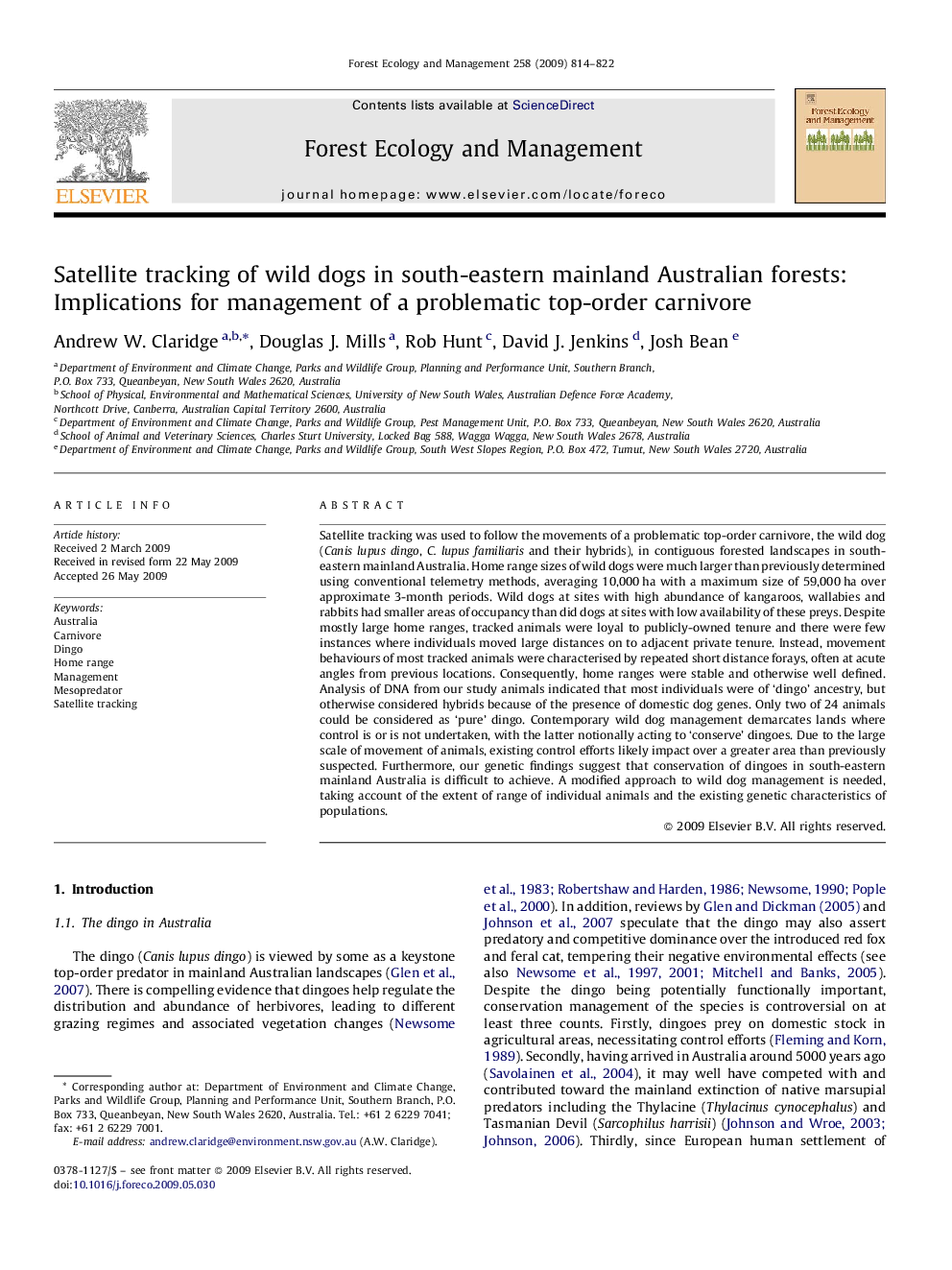| Article ID | Journal | Published Year | Pages | File Type |
|---|---|---|---|---|
| 89071 | Forest Ecology and Management | 2009 | 9 Pages |
Satellite tracking was used to follow the movements of a problematic top-order carnivore, the wild dog (Canis lupus dingo, C. lupus familiaris and their hybrids), in contiguous forested landscapes in south-eastern mainland Australia. Home range sizes of wild dogs were much larger than previously determined using conventional telemetry methods, averaging 10,000 ha with a maximum size of 59,000 ha over approximate 3-month periods. Wild dogs at sites with high abundance of kangaroos, wallabies and rabbits had smaller areas of occupancy than did dogs at sites with low availability of these preys. Despite mostly large home ranges, tracked animals were loyal to publicly-owned tenure and there were few instances where individuals moved large distances on to adjacent private tenure. Instead, movement behaviours of most tracked animals were characterised by repeated short distance forays, often at acute angles from previous locations. Consequently, home ranges were stable and otherwise well defined. Analysis of DNA from our study animals indicated that most individuals were of ‘dingo’ ancestry, but otherwise considered hybrids because of the presence of domestic dog genes. Only two of 24 animals could be considered as ‘pure’ dingo. Contemporary wild dog management demarcates lands where control is or is not undertaken, with the latter notionally acting to ‘conserve’ dingoes. Due to the large scale of movement of animals, existing control efforts likely impact over a greater area than previously suspected. Furthermore, our genetic findings suggest that conservation of dingoes in south-eastern mainland Australia is difficult to achieve. A modified approach to wild dog management is needed, taking account of the extent of range of individual animals and the existing genetic characteristics of populations.
